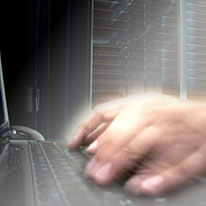The Internet of Things (IoT) trend is growing with connected devices (e.g. lights, thermostats, locks) projected to be over 50 billion by 2020. These smart homes provide both automation and data-tracking options to consumers, operate more efficiently and conveniently than standard homes, and sell faster on the market.
The key to smart home success, however, is security.
Trust Professional Installation
For ultimate security, rely on a trusted partner for installation. And who better than security vendors who have been connecting devices for decades? With safety as their top priority, they can configure your automation right to protect against unwanted access.
Trained professionals are capable of foreseeing problems in the installation process, and will maintain system security through ongoing upkeep and support. If you choose to DIY, ensure your security system includes a formalized monitoring center. Should an emergency arise, the center will dispatch authorities on your behalf, keeping your home protected.
Imagine the Possibilities
Once you have selected a trusted vendor to install, secure and monitor smart devices in your home, the anatomy of your home will shift dramatically. Automated home features offer endless safety, security and convenience potential.

Understand the Risks
Though the benefits abound, smart capabilities are not 100 percent secure. Most devices are designed with time to market and cost in mind, not security. If your connected devices are compromised, hackers could access your digital data and personal information. This could potentially jeopardize the very conveniences listed above if you haven’t first taken the proper precautions and installation.
Examples of risks associated with specific smart functionalities include:
- A hacker could gain access to your automated light system and cause a blackout in your home. Hackers have tapped into 100 wirelessly networked traffic lights already due to lack of security; what’s stopping them from getting into your home?
- If a hacker breaches your network, they can change or add new pin passwords to freely open doors. Rather than picking a lock or breaking a window, a criminal could just walk right inside. Related: Read “How to Protect Your Home From Smart Lock Hackers” for four steps to ensure your smart locks are secure.
- Though your thermostat may not be top-of-mind for security concerns, hackers have been able to access Google’s Nest in just 15 seconds. Once in, they may be able to tap into other connected devices, or adjust the comfort of your home.
- News reports of nanny-cams and in-home surveillance hacks have been nothing short of disturbing. Unless you take proactive steps to ensure that your cameras are private, hackers may be able to remotely monitor your home as well. Related: Read “Protect Your Video Surveillance System from Hackers” for best practices to safeguard against these risks.
Smart Does Not Always Equal Safe
To ensure your smart home is secure, reach out to your provider to protect your devices and network. Some tips include:
- Rely on professional installation to guarantee devices are configured and set up with security as a top priority.
- All home and mobile devices, including your Wi-Fi network, should be password-protected. StaySafeOnline.org provides comprehensive tips for safeguarding your entire home network.
- Seek out smart devices that are Z-Wave certified; this guarantees your equipment has undergone rigorous testing to meet home security standards.
- Avoid connecting devices to unreliable networks, and restrict access of unauthorized devices. Firewalls and antivirus software can protect your devices against hackers and malware.
- Vet vendor security processes. Understand how data is stored offsite and in transit. Are network operations centers (NOCs) secured? Is data encrypted?
Strongly consider risks associated with IoT devices. Take necessary steps to properly install, secure and maintain your smart home, and provide your family with greater safety, comfort and convenience.
Image Source: Created by PR 20/20



